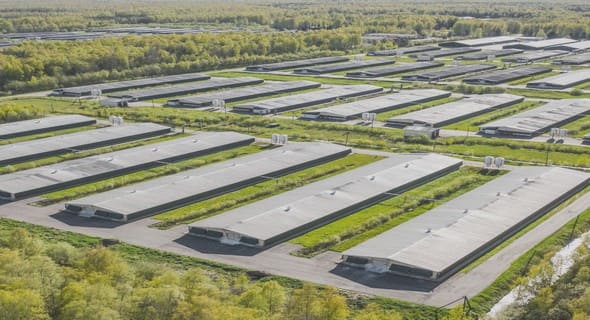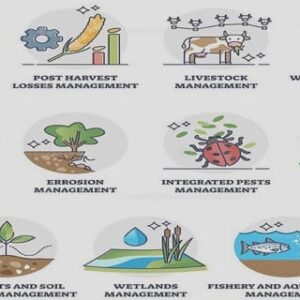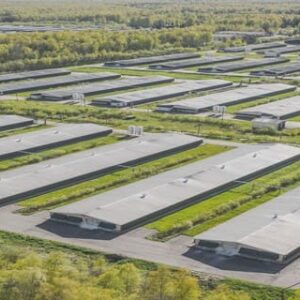(Downloads - 0)
For more info about our services contact : help@bestpfe.com
Table of contents
General introduction
1. Challenge of peri-urban agriculture
1.1. A challenging future of peri-urban agriculture
1.2. Existing strategies for preserving peri-urban agricultural lands
1.3. Relations with “Urban Agriculture”
2. Ecosystem Services and agriculture
2.1. Definition of Ecosystem Services
2.2. Agro-ecosystem
2.3. Ecosystem Services and agriculture
2.4. Challenges of Ecosystem Services in agricultural research
3. Multifunctional Agriculture
3.1. Definition of Multifunctional Agriculture
3.2. Role of MFA in the policies of France and Europe
3.3. Future of MFA
4. Integrated approaches of ES and MFA
5. Objectives of the dissertation
5.1. Development of an integrated framework of ES and MFA for peri-urban agriculture
5.1.1. Comparative review of MFA and ES in agricultural research
5.1.2. Further development of the integrated framework for peri-urban agriculture
5.1.3. Application in the case of Ile-de-France Region
5.2. In-depth studies on abandoned farmlands and agricultural recycling of urban wastes
5.2.1. Management of abandoned lands in peri-urban agriculture
5.2.2. Agricultural recycling of urban organic wastes
5.2.3. Proceeding with a land use type v.s. a service/function
5.3. Multi-level analyzes for the two in-depth studies
5.3.1. Multi-level issue in the management of abandoned farmlands
5.3.2. Multi-level issue in the agricultural recycling of urban waste
6. Structure of the dissertation
Part 1 Development of an integrated framework of MFA and ES for peri-urban agriculture
Chapter 1 Comparative Review of Multifunctionality and Ecosystem Services in Sustainable Agriculture
1. Introduction
2. Literature review of multifunctional agriculture and ecosystem services
2.1. Publication statistics
2.2. Ideological bases of MFA and ES
2.2.1. Historical use of the term “function” in MFA and ES
2.2.2. Provision mechanisms of MFA and ES
2.2.3 Farm-centred approaches versus service-centred approaches
2.3. Comparison of MFA and ES research approaches
2.3.1. Identification and classification of functions/ecosystem services
2.3.2. Quantification, valuation, and mapping of functions/ecosystem services
2.3.3. Trade-offs and synergies between functions/ecosystem services
2.3.4. MFA design and ES management
3. Towards an integrated research framework for multifunctional agriculture and ecosystem
services
3.1. Bundle of ES and spectrum of MFA
3.2. Land-sharing versus land-sparing
3.3. An integrated conceptual framework of MFA and ES
4. Conclusions
Chapter 2 Evolution of agricultural land use in the Ile-de-France Region
1. Study area and methods
1.1. Study area
1.2. Methods
2. Results
2.1. Consumption of cultivable lands by urbanization
2.1.1. Continual urban extension before 1960s
2.1.2. Peri-urbanization and sub-center construction since 1960s
2.2. Evolution of agricultural land use
2.2.1. Structure of arable lands
2.2.2. Evolution of agricultural land use
2.3. Comparison between urban consumption of cultivable lands and the evolution of utilized agricultural lands
2.3.1. Fast urban consumption of agricultural lands drives fast land abandonment
2.3.2. Peri-urban agricultural land use pattern under urban influences
Chapter 3 Integrated framework of MFA and ES for peri-urban agriculture and application in Ile-de-France Region
1. An integrated framework of MFA and ES for peri-urban agriculture
2. Application of the framework in Ile-de-France Region
2.1. Food production ES and related social and economic functions
2.1.1. Food supply function
2.1.2. Function of economic revenue and employment
2.2. Alternative functions and related ES
2.2.1. Landscape aesthetic and cultural ES and related functions
2.2.2. Function of urban waste recycling and related ES
2.2.3 Environmental functions for maintenance of regulating and supporting ES
Conclusions
Part 2 Managing Abandoned Farmlands in Peri-Urban Area: a Multi-level Approach in the case of Ile-de- France Region
Introduction
Chapter 4 Materials and methodology of the study on abandoned farmlands in Ile-de-France
1. Study area and selection of local study sites
1.1. Abandoned farmlands in Ile-de-France Region
1.2. Selection of two local study sites
2. Identification of the principal land use trajectories and abandoned lands
2.1. Land use data
2.2. Computing and selection of the principal land use change trajectories
3. Classification of municipalities to identify different situations of abandonment
3.1. Indicators used for the clustering analysis
3.2. Clustering analysis on municipalities
3.3. Comparing the phenomenon of abandonment in the four groups of municipalities
4. Temporal evolution in the appearance and reuse of abandoned farmlands
5. Interviews with different actors in two local areas
5.1. Carrying out the interviews
5.2. Analysis of the interviews
Chapter 5 Results of the study on abandoned farmlands in Ile-de-France
1. Principal land use changes and the distribution of farmland abandonment
1.1. The principal land use change trajectories
1.2. Spatial distribution of land use changes and abandoned farmlands
2. Classification of municipalities and the different situations of abandonment
2.1. Naming the factors
2.2. Results of the classification
2.3. Differences among groups and test of significance
2.4. Different situations of abandoned lands among the four groups
2.4.1. Cluster 2: municipalities with strong rural characteristics
2.4.2. Cluster 3: highly urbanized municipalities
2.4.3. Cluster 6: municipalities in strong land abandonment because of non-urban factors 107
2.4.4. Cluster 7: municipalities in strong peri-urbanization
3. Evolution of the appearance and reuse of abandoned agricultural lands
4. Social perceptions of ecosystem services and functions of abandoned farmlands
4.1. Differences among actors at different levels
4.1.1. At the individual level
4.1.2. At the municipal level
4.1.3. Coordination of the PNR of Chevreuse
4.2. Comparison of social perceptions between two study areas
4.2.1. Convergences between the two areas
4.2.2. Divergences between the two areas
4.3. Three categories of actors identified with hierarchical clustering analysis
Conclusions
Part 3 Multiscale Influences on the Supply-Demand Relationships of Urban Waste Recycling in Peri-urban Agriculture in the Ile-de-France Region
Introduction
Chapter 6 Materials and methodology of the study on agricultural recycling of urban wastes in the Ile-de- France Region
1. Study area and selection of local study sites
1.1. Study area
1.2. Selection of two local study sites
2. Methods to analyze the regional pattern of supply-demand relationships of sewage sludge land application
2.1. Regional pattern of sewage sludge production
2.2. Distribution of suitable agricultural lands for sewage sludge application
2.2.1. Identification of lands of “Grande Culture”
2.2.2. Considering the limitation of regulations
2.2.3. Municipal potential for land application of sewage sludge
2.3. Spatial flows of sewage sludge through land application in Seine-et-Marne
2.4. Estimation on crop succession pattern in Ile-de-France
3. Interviews and analysis on multiscale influences on the supply-demand relationships
Chapter 7 Results of the study on agricultural recycling of urban waste in the Ile-de-France Region
1. Regional pattern of supply-demand relationship of sewage sludge for land application
1.1. The side of sewage sludge production in Ile-de-France
1.1.1. Statistics of the production and outlets of sewage sludge
1.1.2. Spatial pattern of sewage sludge production
1.2. Municipal potential regarding agricultural lands suitable for sewage sludge application
1.2.1. General structure of agricultural lands in Ile-de-France
1.2.2. Area of agricultural lands suitable for sewage sludge application at the municipal level
1.3. Spatial flows of sewage sludge through land application in Seine-et-Marne
1.3.1. An overall picture of the spatial flows in Seine-et-Marne
1.3.2. Spatial flows of sewage sludge from particular plants
1.4. Estimation of the regional pattern of crop succession
1.4.1. Preferences to crop types and periods for sewage sludge application
1.4.2. Estimation of crop succession pattern in Ile-de-France
2. Multiscale influences on the supply-demand relationships of urban waste recycling in periurban agriculture
2.1. A framework about the multiscale influences on supply-demand relationship
2.1.1. At individual scale
2.1.2. At the scale of local area
2.1.3. Regulations at superior scales
2.1.4. Interscale influences
2.2. Categories of farmers regarding urban waste use
Conclusions
General discussions
1. An integrated framework of MFA and ES for peri-urban agriculture
1.1. Value of the integrated framework for peri-urban agricultural research
1.2. The remaining question of defining ES and agricultural functions
1.3. Interaction between the different ES/functions
2. Considering the mutual relations between land use and ES/MFA
2.1. Mutual action between land use and ES/MFA
2.2. The mutual acting mechanism between land use and ES/function in the management of abandoned farmlands in peri-urban areas
3. Mutual services between actors in agricultural recycling of urban waste
3.1. Mutual services between farmers and waste producers in the agricultural recycling of urban waste
3.2. Implications to Payments for Ecosystem Services/Environmental Services
4. Multi-scale influences and scale mismatch
5. Methodology
5.1. Two in-depth studies
5.2. Multi-level approach
5.2.1. Considering the regional pattern
5.2.2. Inconsistence in the results between regional study and local investigations
6. Operational implications
6.1. Management of abandoned farmlands in peri-urban area
6.2. Improve the system of agricultural recycling of urban waste
Conclusions
References
Appendice




